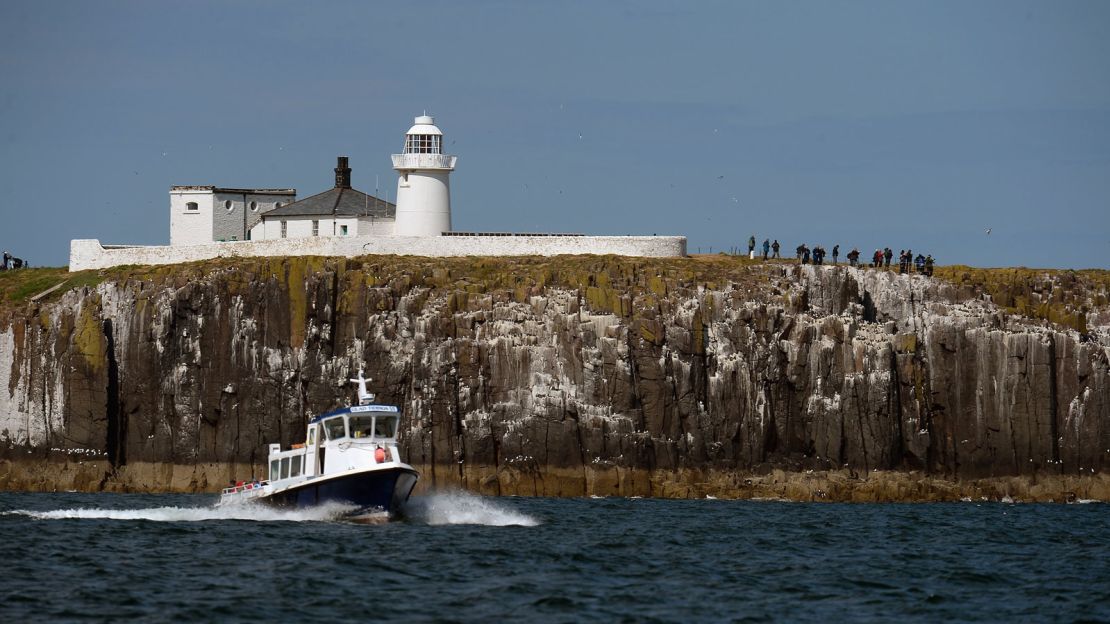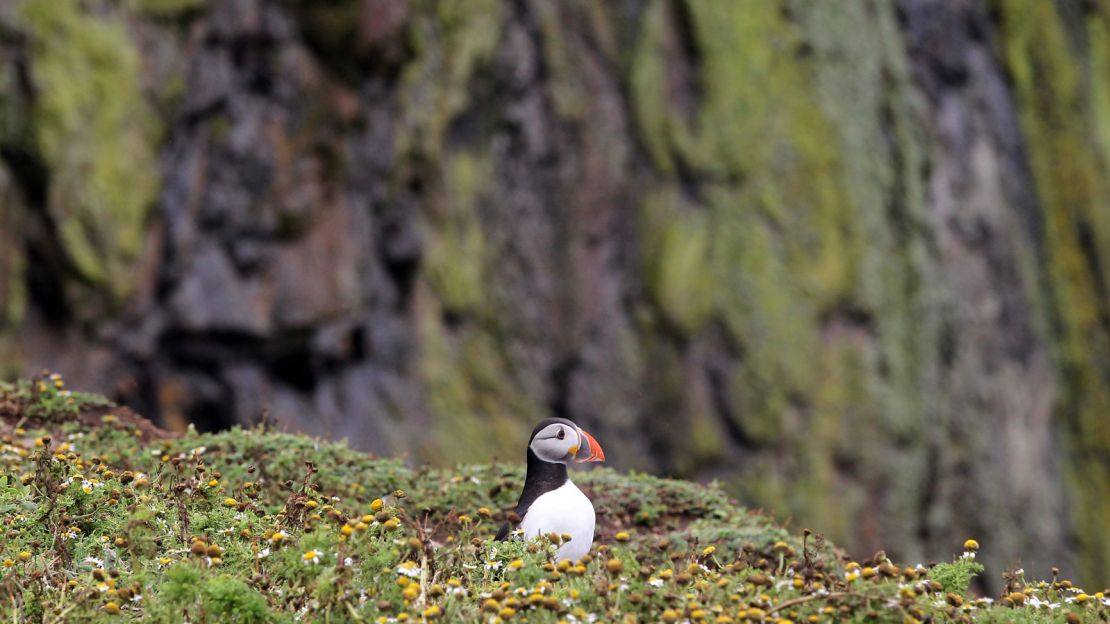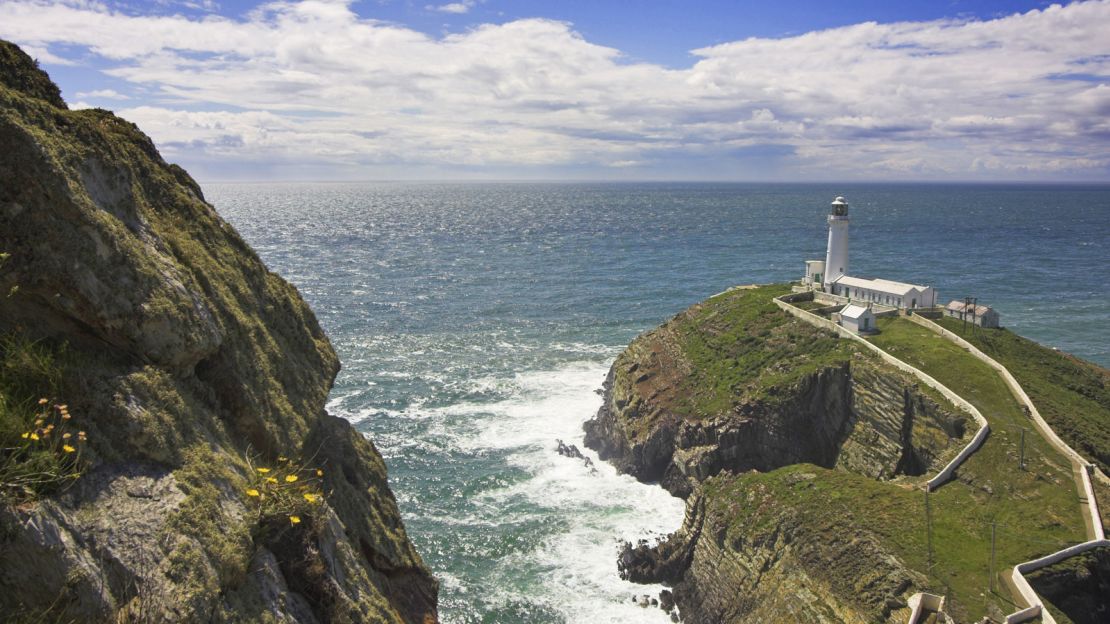Think Britain is just a small island off the coast of Europe? Think again.
It’s actually a huge number of small islands off the coast of Europe – more than 6,000 in fact.
Many are perfect for boat trips and slow excursions to far off, wild places.
Here’s our pick of 10 essential stop-offs for anyone addicted to the casual drift of island life:
1. Scilly Isles
Forty kilometers off of Cornwall, the Scilly Isles are an unlikely tropical gem.
White sandy beaches and azure waters aren’t the first things that come to mind when thinking of the British seaside, but the Scillies have both in abundance.
Thanks to their proximity to warm Gulf Stream currents across the Atlantic, the islands are blessed with unique flora not found elsewhere in the UK.
The stunning Abbey Gardens on the island of Tresco have rare plants from as far afield as Myanmar and Brazil.
Nearby Bryher’s Great Popplestones Bay is one of the most beautiful beaches in the British Isles.
2. Farne Islands

This spectacular seabird colony, a few kilometers from the coast of Northumberland, northeast England, is arguably the nation’s most fascinating set of islands.
Settled by Christian hermits from nearby Lindisfarne in the 7th century, today the islands are home to a towering Victorian lighthouse and thousands of puffins and seals.
The islands are open from March to October, when alongside the aforementioned puffins visitors can spot shearwaters, teals and Brent geese.
Seal tours in October are a great way to see these resident mammals with their newborn pups.
3. Isle of Lundy
The largest island in southwest England’s Bristol Channel, Lundy lies 19 kilometers off of the coast of North Devon.
A small population lives here full time, but day trips are easy to arrange from the mainland.
It’s also possible to stay in one of the few houses, which are maintained by the Landmark Trust.
A marine nature reserve, abundant waters and rocky terrain make it a haven for seabirds, especially puffins.
Travelers can go diving in the pristine, protected waters.
Those who prefer dry land and a good pub can look no further than the excellent Marisco Tavern.
The 13th-century Marisco Castle and disused Old Light lighthouse are worth exploring.
4. Jura and Islay

This pair of western Scottish islands are criminally overlooked.
Jura’s famous Paps mountains offer a hard walking challenge, while Islay’s Machir Bay is one of Scotland’s hottest surf spots (a winter wetsuit is needed no matter the weather).
Beyond the wild countryside, these islands have another enticing facet: whisky.
In the village of Craighouse, Jura’s small distillery is legendary.
Islay has numerous places to try the best single malts in Scotland.
It’s worth seeking out a dram or two of Bowmore or Laphroaig.
5. Rum
Easily reached from the town of Mallaig, Rum is the gem of the Small Isles, a set of islands in the northern part of the Inner Hebrides.
Its mountains are stunning and offer views across the Atlantic and back onto the mainland, while its pristine beaches rival anything found in tropical Thailand or the Caribbean.
Cars aren’t allowed on Rum, meaning the pace of life on this community-focused island is pleasantly slow.
From Kinloch Castle to wild otters along the coast, this is an island that doesn’t soon run out of attractions.
England’s most beautiful destinations
6. Papa Westray

Known simply as Papay to locals, this little island in the Orkneys is reachable by the world’s shortest scheduled flight: less than two minutes from Kirkwall.
Passengers who take a ride on the 10-seater plane operated by Loganair out of Kirkwall on the Orkney mainland get a certificate to mark this achievement.
Some 90 people call this place home and are fiercely proud of its superb beaches and long history.
The famous Knapp of Howar, the oldest known northern European dwellings, are as old as 3,800 B.C., with locals gladly proclaiming that they’re older than the pyramids at Giza.
7. Canvey Island
Located in the Thames estuary and separated from southeast England’s Essex county by deep creeks, Canvey might not be the most obvious place for an island break.
But the place is steeped in ancient history, having been occupied since the Romans first came to Britain.
As well as significant archaeological finds, Canvey has a strong cultural tradition, with well known acts such as Elvis Costello and Dr. Feelgood citing it as a key destination for their musical explorations.
There’s decent food at the 17th-century Lobster Smack pub, which gets a mention in Dickens’ “Great Expectations,” and the excellent art deco Labworth Cafe, too.
There’s great birdwatching at the West Canvey Marsh reserve. Resident species include marsh harriers, lapwings, redshanks and egrets.
8. Skomer Island

A Welsh island, Skomer’s remote location off the tip of the Pembrokeshire peninsula makes it a haven for dolphin, porpoise and, occasionally, whales.
Day trips are the most popular option, but an overnight stay in Skomer’s excellent hostel is best for enjoying the rolling hills and dramatic cliffs, populated in summer by vast colonies of Manx shearwater.
The island is only two and a half kilometers long and three kilometers wide, so can easily be covered on foot.
Photography workshops are held in the area from April to October – they’re a great way to get to know the island better.
9. Brownsea Island
In Poole Harbor, the largest natural harbor in Europe, Brownsea Island is easily reachable from the nearby towns of Bournemouth and Southampton.
Maintained by the National Trust, it’s especially known for its well maintained woodland, which plays home to the red squirrel, increasingly rare on British soil.
It’s also the site of the first Boy Scouts camp, held by Lord Baden-Powell in 1907.
The island is open over the summer.
Guided walks across heathland and in the woods are held throughout the winter on select weekends.
England a beach destination? Yes! 9 beaches worth a visit
10. Holy Island
On the northwestern tip of Wales, Holy Island might not seem too enticing when seen from the main town of Holyhead.
But visitors driving out into its open country will be treated to beautiful coves, ripe for a wild swimming adventure, and Holyhead Mountain, a heathery moor that offers huge, 360-degree views out into the Irish Sea and east to the Welsh peaks of Snowdonia.
South Stack lighthouse and its surrounding cliffs are ideal for an afternoon walk.
It also has an abundance of Celtic archeology to explore.

Joe Minihane is a freelance travel writer. When not cycling stretches of the Tour de France, he can be found in London, New York or wild swimming across the UK for his blog Waterlog Reswum.













